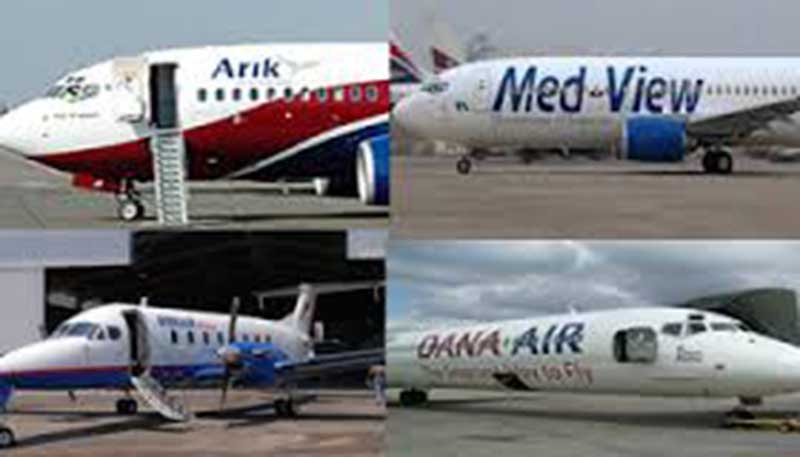
Air travel market in Nigeria shrank in 2017 with lesser number of passengers and flights recorded on both the local and international routes.
The dip, as reflected in 2017 statistics released by the Nigerian Civil Aviation Authority (NCAA), implies lesser revenue accrue to operators despite investment in fleet capacity and surge in global air travel traffic in the last 12 months.

Figures made available at the weekend shows that a total of 7.7 million passengers travelled the local route, while international was 3.6 million, making a total of 11.3 million passengers in 2017.
The cumulative is a marginal drop from the previous year where 8.2 million travelled the local route, while international route recorded 4 million passengers, totaling 12.2 million in traffic in 2016.
Again, a total of 61,822 flights were recorded in 2017, with 13,503 on international routes and 48,319 on the domestic. 2016 was better with a total of 70,147 from 15,465 international flights and 54,682 domestic flights.
The decrease in passenger traffic and flights operated in 2017 also affected the numbers of complaints received by the Consumer Protection Directorate of the NCAA. On international routes, 200 complaints were received while there were 78 on domestic routes. Number of airlines on the international route was 30 while domestic had eight.
Spokesperson of the NCAA, Sam Adurogboye, denied that the industry is shrinking. He said, actually, aircraft and passenger movement had steadily increased in the last couple of years, with more private jets and cargo operations improving the traffic.
Adurogboye said: “It will be wrong to assume that flight activities have reduced based on the number of scheduled flight and airlines in operation. It does not mean that the number of the travelling public has reduced. Our facts are there. There are other airlines.
“Private jets are over 70 in number. The private cargo operators are more than 34 companies with different level of aircraft in their fleets. The number of commercial operators cannot determine the size of the industry. All combined, the number has increased,” he said.
A top official in the Consumer Protection Directorate of NCAA, however, said the drastic reduction in passenger traffic and complaints was due to the exit of Arik Air from the international routes and the streamlining of its domestic operations after its takeover by the Asset Management Company of Nigeria, (AMCON).
According to the source, “One of the major players in the international scene which is Arik Air stopped international operations after they were taken over by AMCON. Throughout 2017, they did not operate international flights. That is why there is a drastic drop in the number.
“They also curtailed their domestic operations and a lot of their operations did not really take place and the number of flights they had going to their destinations really dropped, that is what led to these droppings even in the number of passengers that were carried.”
Meanwhile, the International Civil Aviation Organisation (ICAO) has released the 2017 preliminary report of the global civil aviation activities as “a new record of 4.1 billion passengers were carried by the aviation industry on scheduled services in 2017.”
According to ICAO, “This indicates a 7.1 percent increase over 2016. The number of departures rose to approximately 37 million globally, and world passenger traffic, expressed in terms of total scheduled revenue passenger-kilometres (RPKs), posted an increase of 7.6 percent with approximately 7.7 trillion RPKs performed. This growth is a slight improvement from the 7.4 percent achieved in 2016.”
For more Logistics News, Follow us on TWITTER Follow us on FACEBOOK
ICAO Council President, Dr. Olumuyiwa Benard Aliu, in his remarks, attributed the upward performance of the civil air transportation to some factors:
“The sustainability of the tremendous growth in international civil air traffic is demonstrated by the continuous improvements to its safety, security, efficiency and environmental footprint. This sustainability is the result of concerted efforts and cooperation at the national, regional, and global levels, particularly in terms of ICAO compliance, which is key to accessing the global network.”








